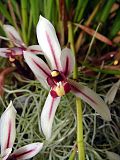Java
Java (Indonesian: [Jawa] Error: {{Lang}}: text has italic markup (help)) is one of the Sunda Islands of Indonesia.
The area is 132,000 square km. It is the world's 13th largest island. Around 140 million people live there, which is half the people in Indonesia and more than on any other island in the world. Most of them speak the Javanese language and many also speak other languages.
The Java Sea is to the north, the Indian Ocean south. The capital city of Indonesia, Jakarta, is in Java. The center is an east-west chain of volcanic mountains.
Climate
Most of Java has a tropical monsoon climate (Am in the Koeppen climate classification). The northern coast of the island is low-lying. The soil is fertile, because the island was made by volcanoes. It is an important area for growing crops in Indonesia.
Religion
The majority religion in Java island is Islam. Majority of the Javanese are Muslim and they follow the branch of Sunni Islam.
Gallery
Sunda Strait between Java and Sumatra
Mount Bromo is a volcano
Java Media
Mount Bromo in Malang, East Java
Parahyangan highland near Buitenzorg (now Bogor, West Java), c. 1865–1872
Cymbidium dayanum - typical orchid in Java
Male Javan rhino shot in 1934 in West Java. Today only small numbers of Javan rhino survive in Ujung Kulon; it is the world's rarest rhino.
Cast of Skull XI at the Hall of Human Origins, Washington, D.C.
Mount Sumbing surrounded by rice fields. Java's volcanic topography and rich agricultural lands are the fundamental factors in its history.
Tea plantation in Java during Dutch colonial period, in or before 1936
Related pages
Sources
| Wikimedia Commons has media related to Lua error in Module:Commons_link at line 62: attempt to index field 'wikibase' (a nil value).. |
- Taylor, Jean Gelman (2003). Indonesia: Peoples and Histories. New Haven and London: Yale University Press. ISBN 978-0-300-10518-6.













